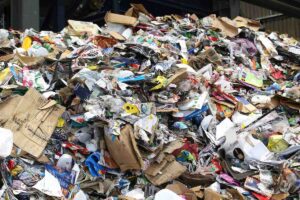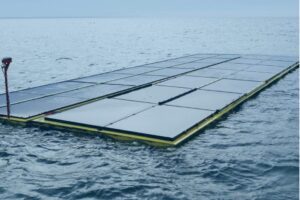Some of Australia’s largest fossil fuel projects have systematically underestimated the amount of greenhouse gas emissions they will produce, with new analysis suggesting real-world emissions have significantly exceeded estimates provided to planning authorities.
The analysis published by the Australian Conservation Foundation has found that several of Australia’s largest coal and gas developments reported to the Clean Energy Regulator that they were releasing significantly more greenhouse gas emissions than companies had stated when seeking approvals.
“We found that two in three fossil fuel projects were wrong about their estimates by more than 25 per cent. In some scenarios, this includes projects that actually emitted less than anticipated,” ACF said.
“But most concerning, we found that one in three fossil fuel projects are emitting more than estimated during the approval phase.”
According to ACF’s analysis, the most significant “over-emitter” was gas giant Chevron, which reported that its Gorgon LNG facility had produced 16 million tonnes more greenhouse gas emissions than was stated by the company during the project’s approval phase.
During the approvals process, the Western Australian state government imposed as a condition of the Gorgon project that it must be paired with a carbon capture and storage project, which has significantly underperformed since it was commissioned in 2019, with Chevron agreeing to spend more than $40 million to offset the excess emissions.
But ACF said the troubles faced by the CCS project did not account for the entirety of the surplus emissions from the Gorgon LNG facility.
“The emissions from the Gorgon gas project have exceeded even the worst-case scenario described in Chevron’s environmental impact statement,” ACF said.
“Even using the estimate Chevron provided for the project without CCS, emissions were over the estimate in every single year of its non-CCS-operational period.”
Whitehaven’s Maules Creek coal mine was another project found to be exceeding its estimated greenhouse gas emissions, emitting three to four times more greenhouse gas emissions than it initially estimated. Another Whitehaven coal mine, at Narrabri, has emitted double the emissions originally predicted during its planning phase.
ACF said the discrepancies between the volume of emissions companies said may be produced by coal mine developments during their planning processes, compared to their actual emissions, undermined efforts to tackle climate change.
“These emissions blowouts matter because the extra pollution is supercharging our climate problem, leaving a legacy of longer heatwaves and droughts, more devastating bushfires and more extreme weather events,” ACF lead environmental investigator Annica Schoo said.
“The underestimation of emissions is not merely an administrative problem. The federal government is currently using inaccurate information to inform its climate policy.”
The analysis raises important questions around the accuracy of information provided to planning regulators when deciding whether a new coal or gas development should proceed, given projects were subsequently reporting much higher emissions once actually operational.
There has been an increased focus on including climate change and greenhouse gas emissions as relevant considerations in the planning process for proposed fossil fuel projects.
If planning authorities are provided with a significant underestimation of future greenhouse gas emissions, it may undermine the ability for greenhouse emissions to be adequately controlled.
ACF pointed to federal government policies like the Safeguard Mechanism as being inadequate for controlling growth in Australia’s greenhouse gas emissions.
“The government’s safeguard mechanism has the potential to curb emissions from big polluting companies, but it is riddled with flaws and needs a complete overhaul to make it effective,” Schoo added.
“ACF calls on companies to take responsibility for inaccuracies and immediately fix the gross under-estimation of emissions in environmental impact statements, so Australians have a truer picture of the damage these polluting facilities are doing to the environment.”
In preparing the research, the Australian Conservation Foundation worked with students from the Australian National University to compile and analyse the emissions data of major emitters.
“We spent countless hours going through the environmental impact statements of hundreds of projects to compare their estimates with actual pollution figures,” ANU student Jackson Balme said.
“Then we contacted the eleven facilities that showed significant underestimations to give the operators an opportunity to correct or explain our findings, but unfortunately none responded before our deadline and the one reply we have received since then provided insufficient information to fill in the blanks.”
“We hope to start a conversation with the companies that will lead to them implementing measures that reduce their greenhouse emissions in line with their estimations,” Balme added.









